David Suzuki's Blog, page 67
May 6, 2015
Support North America's first regulatory restrictions on neonics!
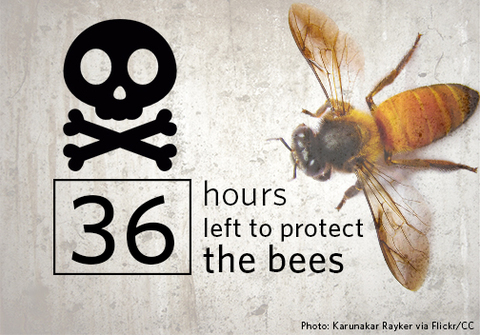
When pollinators are in trouble, so is our food supply. This is the last chance to have your say on Ontario's plan to reduce the use of neonics. Regulations will be finalized by July.
Hey! Want more DSF? Join David Suzuki on Facebook

May 5, 2015
How to make the world a better place
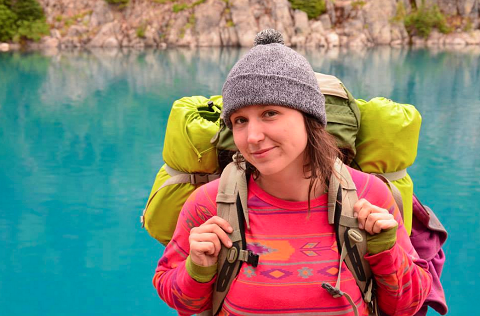
Authentic leaders know their higher purpose — what they believe they're on this Earth to do!
Finding authentic leaders to become volunteer Queen of Green Coaches this spring wasn't hard -- more than 125 people applied! I accepted 40. (Please subscribe to my monthly digest to hear about fall 2015 applications.)
Authentic leaders:
Know their higher purpose -- what they believe they're on this Earth to do
Are genuine (humble, grounded, empathetic and patient)
See good intentions
Practice self-compassion
Desire and have the ability to care for others
Can create optimal environments for others to flourish
Introducing...(most of) my sixth round of coaches:
Abby, Calgary Alta. is an urban homesteader with a passion for healthy, sustainable living through permaculture design and connected communities, spreading the word about these projects throughout her community.
Ali, Chilliwack B.C. (@alilovesbugs) lives in the forest with her partner and two cats, loves bugs, is passionate about people, optimistic about our planet's future and encouraged by others making a difference.
Teacher and mother of two boys, Angie, Wellandport Ont. enjoys gardening, strives to be self-sustainable and reduce consumption by reusing and upcycling and helps her students develop their voices for change on environmental and social justice issues.
Full-time mother of three, and part-time artist/student and organic farm worker, Annabelle, Sooke B.C. studied technology of architecture, worked as a carpenter and has a passion for green buildings, recycling and upcyling from construction waste.
Annie, Vancouver B.C. bikes to work every day, is part of her workplace green team and has neighbours who help one another -- exchanging plants and sharing tools, seeds and soup.
Ashley, a yoga instructor and holistic nutritionist from Pelham Ont. can be found at the Meier Family Organic Farm snuggling baby goats, getting her hands dirty in the garden, making beeswax candles and promoting all things organic.
Becky, Winnipeg Man. has a passion for people, animals, nature and the inter-connectivity that unites us all. She is a living green, living well co-ordinator at the Green Action Centre, which allows her opportunities to inspire and be inspired. Brandy, Walkerton Ont. is a community educator and mom who loves her worm compost bin (fruit flies or not!) and a zero-waste lifestyle. She's also the deputy clerk -- and brand new municipal sustainability co-ordinator.
Founder of the Neurofibromatosis Society of Nova Scotia, Emily, Glen Margaret, N.S. lives off-grid on 10 acres of woodland with her husband and two boys, and makes and sells all-natural bath and body care products.
Ericka, Calgary Alta. is communications and outreach co-ordinator for CPAWS Southern Alberta Chapter. She surrounds herself with like-minded people who live "green", and uses her skills to engage and teach.
Hélène, Dundas Ont., had an eye for reducing and recycling as a teenager. Allergies and sensitivities drive her to look for efficient and natural solutions at home and inspired her first cookbook Free for All - 30 recipes NOT to die for.
President of the Vancouver Fruit Tree Project (@vftp), Jenn U., Vancouver B.C. is passionate about food security, the environment, waste reduction and community building, and grows vegetables at City Hall.
Mother of three, Jennifer, Lucan Ont. (@jensownaddy) tries to maintain a minimalist household, DIY everything and live more sustainably while working full-time and maintaining her "green" Facebook community.
Jennifer V., Calgary Alta. is a mother to three boys and owner of Small Planet Cleaning Products. She's passionate about creating community. Her motto: "Grow where you're planted".
Julia, City of Kawartha Lakes Ont. (@sogreenithurts) is an environmental steward, clean eater, zero-waster, organic gardener, stay-at-home mom, volunteer and future social entrepreneur. (She's "greening" the mayor!)
Kelly, Maple Ridge B.C. is a mother, librarian and children's art studio owner. She writes about green living and home learning loves handmade things and plans on building her own cob home!
Kim F., Burnaby B.C. loves a good thrift store and routinely whips up secretly healthy foods for her family (or toothpaste) and participates in environmental campaigns or community events. Kim works for the Green Party of Canada.
Kimberley S., Prince George B.C. has a BA in kinesiology and a green thumb. She loves to DIY (cosmetics to crocheting) and enjoys the challenges of being eco-friendly and bringing others along for the ride.
Kristen, Regina Beach Sask. studies environmental biology and ecology at the University of Regina. A writer, organic gardener and collector of scientific theories, she lives on the lake with her husband, two cats and dog.
Krysta, Richmond B.C. is a rock-climbing, green-living communicator with a love for community engagement. She is passionate about sustainable food systems and reducing waste.
Leanne, Winnipeg, Man. is a mother; wife and pet owner and enjoys camping, fishing and geocaching. She strives to bring simplicity to her household and enjoys living up to her family's mission.
As a lawyer in Mississauga Ont., Leah's world is full of paper and complex rules. At home, she prefers a simple, fun life. She believes "green" living should come naturally, like good manners.
Lindsay, Ottawa Ont. (@itslindsaymarie) is a single mom, part-time waitress and recent reiki master who loves hiking in the Gatineau park hills and rollerblading with her daughter. Lindsay envisions a cleaner, "greener" future for generations to come.
Artist and educator Marisa, Vancouver B.C. works at the intersection of art, environment and social practice, and connects local movers and shakers of the non-profit world with the creative resources they need to make their vision happen.
Morganna is a mom and an upcycling and visual artist from Montreal, Que. She runs a hands-on workshop at Melons and Clementines teaching mothers easy DIY recipes and projects to reduce waste and exposure to toxics in the home.
After 10 years of teaching and a degree in business administration, Parisa, Calgary Alta. courageously started over to pursue her dream to become an environmental scientist. She's started "greening" her own family near and far.
Rebecca, Blind Bay B.C. practices recycling, upcycling and refusing! She enjoys learning and teaching others about their consumer choices and believes the world will only change from understanding our part in it.
Sarah, Toronto Ont. (@SarahLazarovic) is a mom, artist and author of A Bunch of Pretty Things I Did Not Buy -- about trying to live with less.
Ecologist, writer, storyteller, and mother of two, Shalan, Bear River First Nation N.S. works on community projects in her home territory of Kespukwitk. Her favourite work weaves cultural and ecological ways of knowing about the land and community.
Shelley, Prince Albert Sask. is originally from Beausoleil First Nation in Georgian Bay, Ont. A mom to two sons, she sought elders' teachings and consciously makes decisions to reflect those teachings and her values -- garbage-less Christmases and birthdays!
Stacy, Travistock Ont. works part time as a registered massage therapist and is a mother of two girls. She enjoys growing and preserving from her own garden and taking care of her cats, dogs and free-range hens on her 12-acre hobby farm.
Fourth-time coach Stephanie, Langley B.C. works as a community recreation co-ordinator and loves finding ways to get to know her community and getting outside with her spirited two-year-old daughter.
Terri, Burnaby B.C. always plans her free time and vacations around outdoor activities. She feels lucky to work for a company that has values she believes in: a commitment to serving the planet and the community.
Want to discover your authentic self? Try a homework assignment I gave my Queen of Green Coaches.
Ask three or four people you trust -- friends, family or co-workers:
Who am I when at my best?
What is my gift to the world?
And then sit with it.
Sincerely,
Lindsay Coulter, a fellow Queen of Green
Hey! Want more DSF? Join David Suzuki on Facebook

Using the California Effect to fight climate change
The "California Effect" describes the leadership role of a region that enacts progressive legislation that is adopted beyond its borders. It got its name from regulations passed in the Golden State requiring better gas mileage and fewer emissions from automobile makers that led to massive fuel efficiency improvements in cars, including hybrid and zero-emission electric vehicles now in use around the world. California continues to live up to its reputation as a leader with recent leaps in promoting renewable energy, energy efficient homes and appliances, and an innovative economy focused on advanced technology. Today, Californians use about half the electricity per capita as the rest of the U.S. while over a quarter of new homes in South California are powered by the sun.
How has California achieved this?
In March, the David Suzuki Foundation hosted a Vancouver event with UBC's Centre for the Study of Democratic Institutions and the Pacific Institute for Climate Solutions and invited Wade Crowfoot, California's deputy cabinet secretary and senior adviser to Gov. Jerry Brown, to learn how the state is leading the charge on climate change while building a stronger, cleaner economy.
As Crowfoot explains, the answer is the state's belief in the ingenuity of its people, setting environmental and economic goals that reinforce each other, and backing up goals with laws and economic signals that drive innovation and investment around the use of cleaner and more energy-efficient technologies.
California's climate objectives continue to make waves. In January, Gov. Brown set a goal to halve the state's petroleum consumption and provide 50 per cent of electricity with renewable energy by 2030. In April, the governor followed up by setting the most ambitious carbon pollution cutting target ever in North America, aiming for a 40 per cent reduction below 1990 emissions levels by 2030.
This is welcome news as world leaders prepare to forge an effective plan to counter climate change at the UN climate summit in Paris in December.
The Global Warming Solutions Act
California is the most populous state in the U.S., with slightly more people than all of Canada. If it were an independent country it would have the world's seventh-largest economy, just ahead of Brazil. That makes the work California is doing to fight climate change all the more impressive, as large jurisdictions have a notoriously difficult time passing progressive legislation. It's a challenge California faced in 2006 with its Global Warming Solutions Act (referred to as Assembly Bill 32 or AB-32).
AB-32 was groundbreaking legislation in a region the size of California. Its ambitious goals include an 80 per cent reduction of carbon emissions by 2050. California has prioritized clean energy by putting a price on carbon pollution through the use of a cap-and-trade market, which Quebec has joined, with Ontario soon to follow. It has passed laws requiring a greater share of renewable energy to power the state each year while homes, appliances and electronics must meet stringent energy-efficiency standards. California is also pushing to have every sixth car sold to be electric by 2025. There are even plans to build a high-speed train corridor between its most travelled routes, linking cities in the north and south.
Defending California's clean energy economy
But California's climate action legislation was not met with universal enthusiasm. A small but well-funded group, bankrolled by two Texas oil companies, worked for four years to get it repealed. In 2010 they succeeded in getting a statewide referendum on the issue. With the future of California's rapidly growing clean energy economy in the hands of citizens, a broad coalition of supporters came together to educate people about the environmental, economic and quality-of-life benefits that went along with AB-32. In the end, 61.6 per cent of Californians voted in favour of keeping California's clean energy laws, demonstrating their deep commitment to acting on climate change and a desire to support progress.
Since this landmark victory, the clean energy industry has exploded in California. The state is home to some of the world's largest renewable energy projects, including the Ivanpah Solar Electric Generating System, which powers more than 140,000 homes, and the Alta Wind Energy Centre, which produces enough energy for 450,000 homes. The state wants to be the headquarters for innovative companies like electric car maker Tesla, which currently employs more than 11,000 Californians. It's paying off. More people in California are now employed installing solar panels than by all electricity utilities combined.
California's green economy was not a fluke. It is the result of hardworking people who understand the future needs of our planet coming together to support what they know is right. California's leadership on climate change represents the power that an informed electorate can have.
The California Effect is going strong.
Hey! Want more DSF? Join David Suzuki on Facebook

May 1, 2015
New NatureWatch features make citizen science easier than ever
Spring call goes out to Canadians to record nature in their own backyards
Spring is here and with it NatureWatch and the Toronto Zoo are encouraging Canadians to get into their backyards and local parks and contribute to scientific research at the same time. NatureWatch.ca is launching an enhanced, easy-to-use, mobile-friendly website to encourage Canadian families to reconnect with nature. People can become "citizen scientists" and report sightings of frogs and toads, flowering plants, receding lake ice and even earthworms. It's a call to the public for a nationwide effort to help track how environmental changes are affecting Canadian nature.
Started over 15 years ago, the Canada-wide NatureWatch program includes FrogWatch, PlantWatch, IceWatch and WormWatch -- with plans for more programs to come. People are given information in these programs on how to use smartphones or computers to pin nature observations on an interactive map.
Robert McLeman, a geography professor at Wilfrid Laurier University and one of the organizers of NatureWatch, explains how it works. "Imagine you and your kids are playing in the park and you spot a frog. Can you tell what species it is? Grab your phone, open FrogWatch on the browser and scroll through photos of frogs native to your province until you find a match. You can even hear a recording of the call. Then, you can submit your observation straight from your phone using an interactive map. It's so easy, a kid can do it -- and that's the point."
"Citizen science is a powerful tool that connects Canadians to wildlife and the local environment and captures information on ecological trends over time," says Julia Phillips, Adopt-A-Pond Coordinator, Toronto Zoo. "The Toronto Zoo is proud to be a long-standing partner of the NatureWatch collaborative and excited to support citizen science initiatives like FrogWatch to inspire Canadians to save and protect species and habitats in their own backyards."
Observations entered into NatureWatch are combined to track species distributions, variations in the lengths of seasons and other important environmental processes. Users can access a map of NatureWatch observations from across Canada and read reports on how their data are being used in research. Data collected with the help of citizen scientists has been proven to be very reliable for scholarly research, and past NatureWatch observations have been used in peer-reviewed scientific studies.
What better way to get involved in NatureWatch than to take part in the Toronto Zoo's Spring Toad Festival this Saturday, May 2, and Sunday, May 3. It's a great opportunity learn how you can participate in the FrogWatch program. Get involved in games and activities, have your face painted, meet Toady, the giant toad mascot, and explore the wonders of wetlands at our Americas Wetlands outdoor exhibit.
Media contacts:
Amanda Chambers
Supervisor of Public Relations and Events
Toronto Zoo
#416-392-5941
achambers@torontozoo.ca
Robert McLeman
Associate Professor
Department of Geography & Environmental Studies
Wilfrid Laurier University
#519-884-1970 ext. 2653 or #519-580-0384
rmcleman@wlu.ca
Stephen Hazell M.Sc. LL.B.
Director of Conservation and General Counsel
Nature Canada
#613-562-3447 ext. 240
shazell@naturecanada.ca
Scott Wallace
Senior Research Scientist
David Suzuki Foundation
#778-558-3984
swallace@davidsuzuki.org
About the Toronto Zoo:
Toronto Zoo has been a partner of the NatureWatch collaborative since the program's beginning. The zoo's Adopt-A-Pond Wetland Conservation Programme plays an integral role by coordinating the FrogWatch program in Ontario. The FrogWatch program engages volunteers in monitoring amphibian populations and their habitats to determine trends in species distributions and calling patterns over time. More than 1,100 people have contributed 15,000-plus observations to FrogWatch Ontario, and the program is still growing!
The Toronto Zoo is Canada's premier zoo and a leader in animal preservation and environmental protection. More than a tourist attraction, the Toronto Zoo boasts a number of leading programs for helping wildlife and their natural habitats -- from species reintroduction to reproductive research. A world-class educational centre for people of all ages, the Toronto Zoo is open every day except December 25 and attracts approximately 1.3 million visitors each year. For more information, visit http://www.torontozoo.com.
About NatureWatch:
NatureWatch is operated by a partnership of geography departments at Wilfrid Laurier University and the University of Ottawa, Nature Canada and the David Suzuki Foundation, Toronto Zoo, and the Centre for e-learning at the University of Ottawa. All data collected through NatureWatch are publicly available for research use free of charge. NatureWatch does not collect any personal information about participants entering data.
Hey! Want more DSF? Join David Suzuki on Facebook

April 30, 2015
Tell Toronto city council to vote yes for our right to a healthy environment!

On May 5, Toronto city council will vote on a declaration to recognize the right to live in a healthy environment. Tell your councillor to vote yes!
Hey! Want more DSF? Join David Suzuki on Facebook

Milkweed is a monarch's best defence
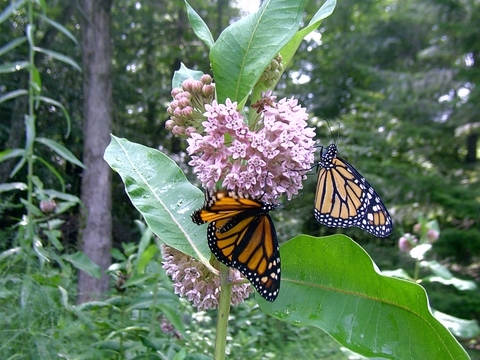
(Credit: Ina Warren, Make Way for Monarchs)
The monarch butterfly is a wonderful creature with an amazing story. In late summer, monarchs in southern Canada and the U.S. northeast take flight, travelling over 5,000 kilometres to alpine forests in central Mexico. The overwintering butterflies cling to fir trees there in masses so dense that branches bow under their weight.
The monarch's multigenerational journey northward is every bit as remarkable as the epic southern migration. Three or four successive generations fly to breeding grounds, lay eggs and perish. The resulting caterpillars transform into butterflies and then take on the next leg of the trip. Monarchs arriving in Canada in late summer are often fourth or fifth generation descendants of butterflies that flew south the previous year.
What may be the monarch's most striking quirk is its caterpillars' reliance on milkweed as its sole food source, a phenomenon called "monophagy". Milkweed plants contain small traces of cardenolides, bitter chemicals monarchs store in their bodies to discourage predators, which associate the butterflies' distinctive colouration with bad taste. But relying on a single type of plant for survival is a risky strategy that has put monarchs in grave danger.
In the mid-1990s, the eastern monarch population was more than one billion. In winter 2013, the population had dropped by more than 95 per cent to 35 million, with a modest increase to 56.5 million this past winter. As University of Guelph postdoctoral research fellow Tyler Flockhart notes, a single severe storm could extinguish the entire monarch population. A 2002 snowstorm wiped out 80 million butterflies. A similar trend has been occurring west of the Rockies, where the western population overwinters in California and migrates as far north as central B.C.
Much of the monarch butterfly decline has been pinned on virtual eradication of its critical food source throughout much of its migration path by profligate use of a glyphosate-based weed killer called Roundup, which corn and soybean crops have been genetically modified to tolerate. Blanketing fields with the herbicide kills plants like milkweed. As a result, several U.S. Midwest states -- the heart of monarch breeding territory -- have lost most of their native milkweed, causing monarch reproductive rates to drop by more than 80 per cent.
A recent study suggests glyphosate is merely the first of a one-two toxic punch from industrial agricultural operations. The second is neonicotinoids, the controversial nicotine-based insecticides that have been identified as a chief culprit in the decline of honeybees, along with a host of birds, bees and butterflies. It appears that even at one part per billion, these chemicals can affect monarch caterpillar development, delivering a potential knockout blow for the imperilled insects.
The good news is that many jurisdictions are catching up with the science. Ontario's government has proposed regulations to reduce neonic use by 80 per cent over the next couple of years. In early April, the U.S. Environmental Protection Agency issued a moratorium on new applications to use neonicotinoids. I hope this marks the turning of the toxic tide, but time is running out.
What can you do to help? While government agencies in Mexico, the U.S. and Canada are scrambling to hatch plans to save monarchs, the scientific community has been clear: A lot of milkweed must be planted over the next few years. One great opportunity is the many thousands of kilometres of linear corridors -- rail, road and hydro rights-of-way -- that run throughout the migratory landscape and can be modified to grow milkweed and other pollinator-friendly plants.
Yards, school grounds and parks are also perfect for butterfly gardens and milkweed patches, and planting milkweed in your backyard or balcony garden is a great way to help. Be sure to call your local garden centre or nursery to ensure they stock native milkweed plants this spring.
Find out more about milkweed and information about how to bring monarchs back from the brink at the David Suzuki Foundation's Got Milkweed campaign website. You can also donate to support Foundation volunteers planting milkweed in the Greater Toronto Area.
Planting milkweed may seem small, but the combined actions of thousands of concerned Canadians stitching together parks and yards with schools and rights-of-way into a glorious tapestry of butterfly corridors could usher in a new, hopeful era for monarch butterflies.
Hey! Want more DSF? Join David Suzuki on Facebook

April 29, 2015
How to get under the influence...of nature
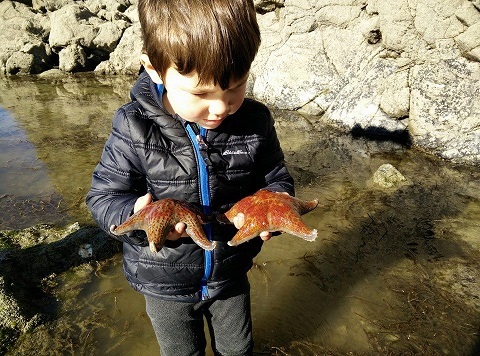
Did you know that low tide makes a great babysitter?
Some days it feels as though my city is yelling at me, particularly if I've skipped too many doses of "Vitamin N" (for "nature").
Recently my son asked, "Mommy need to go into nature?" Cute, right? He understands how much I need nature to be at my best. (He posed this question after pouring his expensive organic milk on the floor, running through it and tossing his lunch in the puddle.)
I'd much rather be under the influence...of nature. It cures my irritability and so much more -- time spent outside reduces stress, makes people more generous and combats loneliness.
Each spring, we challenge people worldwide to take a daily dose of nature -- 30 minutes for 30 days. Three years of data reveals that participants not only spend more time outside, they also reduce their indoor screen time and report better sleep.
To realize the full benefits of time spent in nature, DO:
Inhale: it will lead to clearer thinking
Look directly at it: even if it's poop
Bring a friend: download our tool kits for workplaces or schools
Listen: turn off your cell phone ringer that sounds like a bird or cricket and listen for the real thing
Nature is calling. Will you answer? Join us for the 30×30 Nature Challenge.
So... if "hangry" is the anger you feel when you're hungry, what's the term for the irritability you feel when you're due for time in nature?
Comment on this blog with your suggested term to win a signed David Suzuki T-shirt!
Sincerely,
Lindsay Coulter, a fellow Queen of Green
Hey! Want more DSF? Join David Suzuki on Facebook

How to test your home for radon
You probably minimize your family's exposure to toxic chemicals by using paraben-free shampoo, living in a scent-free home, cleaning your tub with baking soda and gardening pesticide-free.
Here's another way to keep a healthy home: Test it for radon (Enter below to win a detector!)
Radon is a radioactive gas formed by the natural decay of uranium in soil and rock -- which all our homes are built on. Radon can seep into buildings through foundation cracks, become trapped and accumulate. Without proper ventilation, concentrations in indoor air can reach dangerous levels.
Radon is a known carcinogen -- responsible for 16 per cent of all lung cancer deaths in Canada and the leading cause of lung cancer among non-smokers.
You can't smell it, see it or taste it.
Radon concentrations are known to be high in some parts of Canada (CAREX Canada's online map illustrates Health Canada's survey of radon levels in 14,000 Canadian homes. Click on your province and city.) But no areas of our country are "radon-free".
How can I measure radon in my home?
Step one: Purchase a testing device. They can cost as little as thirty dollars.
Check your local hardware store
Purchase online from many Lung Associations across Canada or the Radiation Safety Institute
Contact a business specializing in radon testing
Some stores sell only short-term radon detectors. Be sure to select a test device that measures concentrations over a period of at least 90 days.
Step two: Set up your testing device. Indoor radon levels can vary hour to hour and day to day, so test for at least three months to calculate long-term average concentrations. The best time is during cooler seasons when your heater is on and windows are closed.
Step three: If concentrations are high, a certified mitigation professional can help, likely for less than the price of a new furnace.
Health Canada's indoor radon guideline is 200 becquerels per cubic meter (Bq/m3, a measure of radioactivity) -- double the World Health Organization's advice. The David Suzuki Foundation wants Health Canada to revise the national radon guideline to 100 Bq/m3 and ensure prevention, testing and, where necessary, mitigation in public-access buildings, including daycares, schools and hospitals.
Step four: Stay informed:
Take Action on Radon
Radon Aware
Health Canada
The David Suzuki Foundation's 2015 report, Revisiting Canada's Radon Guideline
I'm testing my home for radon this spring and I hope you will, too!
Enter below to win a radon detector donated by the BC Lung Association (draw date May 21, 2015).
Sincerely,
Lindsay Coulter, a fellow Queen of Green
Hey! Want more DSF? Join David Suzuki on Facebook

REaDY Summit 2015 was about youth empowering youth
It's gratifying to see third and fifth graders share their desire to be guardians of Earth. At the fourth REaDY Summit at Hugh Boyd Secondary in Richmond on April 18, third grader Lyrra Guelos, fifth graders Isha Kapoor and Theresa Mah and ninth grader Hailey Lai shared their winning speeches with teachers, parents and students on why protecting the planet means protecting their future. (REaDY stands for Richmond Earth Day Youth Summit.)
Isha Kapoor, from Walter Lee Elementary, said, "My dream is to be an actress, and lots of others kids have dreams too. But our dreams can't happen if we don't have a healthy planet."
Theresa Mah, from Jessie Wowk Elementary, was the first REaDY speech contest winner four years ago, and she returned this year with another winning speech. "We can nurse Mother Earth back to life with every step we take. Round up your buddies and have a tree-planting day. Join in on your family beach day and pick up as many pieces of litter as you can. One step towards healing our planet will alter our future."
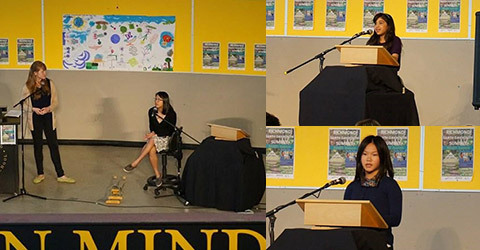
Left: REaDY Summit 2015 keynote speakers - Veronica Bylicki and Tesicca Troung. Top right: Isha Kapoor. Bottom Right: Theresa Mah
According to Hayley Lai from J.N. Burnett Secondary, we must do our part to ensure everyone plays a role to keep our planet in good shape. "I can't blame others for what they do that impacts our planet because most of us are responsible. Most importantly, we are one. We must work together to save our precious resources before it is too late."
Since its inception four years ago, REaDY's keynote speakers have been accomplished adults, including David Suzuki Foundation CEO Peter Robinson, environmental broadcaster Sarika Cullis-Suzuki and David Suzuki, co-founder of the David Suzuki Foundation. This year was different. REaDY was kicked off by the four young speech contest winners and wrapped by keynote speeches from three older youth, Alice Xu, Tesicca Troung and Veronica Bylicki. The theme was Plan Our Future. REaDY, set go! And boy, did they plan.
First time MCs, Grade 11 student Janelle Wong and Grade 12 student Janice Ho, totally rocked, as did the fabulous Green Ambassadors, who hosted the half-day event.
The fourth REaDY Summit was about youth empowering youth. If last year was about passing the torch, the young people who came to Hugh Boyd Secondary from six school districts in Metro Vancouver definitely took their responsibility to the planet and their future seriously. Here are some encouraging words that David Suzuki Foundation Queen of Green Lindsay Coulter shared at the opening of the summit.
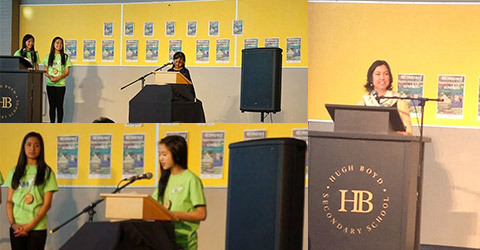 Top left: Janelle Wong and Hayley Lai. Bottom left: Janice Ho, Janelle Wong and Lyrra Guelos. Right: Lindsay Coulter - David Suzuki's Queen of Green
Top left: Janelle Wong and Hayley Lai. Bottom left: Janice Ho, Janelle Wong and Lyrra Guelos. Right: Lindsay Coulter - David Suzuki's Queen of Green"There is no 'one path' to making a difference. Everyone doesn't have to do exactly the same thing. It takes courage to make change and guide others towards change. But when you lead -- share your knowledge and experience -- you're making the choice not to shrink from responsibility."
Coulter went on to give the following five tips on how to make a difference.
Stop and listen (instead of arguing or persuading).
Surround yourself with others who care. (Like we are today.)
Recognize that everyone has a unique role to play.
Give others the space to experience and share what they are feeling.
Don't be a judgey pants.
The event was also covered by local media including the Richmond News, Richmond Review and Fairchild Television.
Hey! Want more DSF? Join David Suzuki on Facebook

Rock out on rockfish!
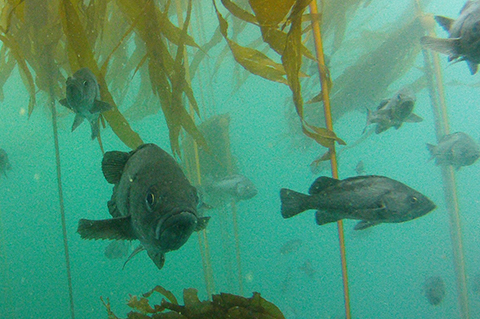
(Credit: Rowan Trebilco)
By Public Engagement Specialist Kyle Empringham and SeaChoice Market Analyst Kurtis Hayne
Ever eaten rockfish? It's delicious. You might even have taken a bite and not known it!
Rockfish are often marketed as "snapper," a term generically applied to any of the more than 70 rockfish species that live off North America's west coast. Most grocery store "snapper" is one of the 15 most commonly sold rockfish species.
Rockfish live for a long time -- most species to over 60 years old. But some species live to be about 200 years old! Like other long-lived species, they mature late in life and can be easily overfished if not managed properly.
This is precisely what happened in B.C. and U.S. waters from about 1940 to 2000. Lack of management for these tasty, mild, white fish resulted in depleted rockfish populations and nearly all species were placed on the SeaChoice red or "Avoid" list. But management of these fisheries has steadily improved throughout North America since about 1997. Now most stocks are recovering and being fished to ensure a continued rebound. Updated rockfish recommendations were recently released and there are now no U.S. rockfish with an "Avoid" recommendation.
In Canada, we still have several yellow ("Some Concerns") recommendations and some others remain on the "Avoid" list. The rockfish fishery is among the best-managed fisheries in the world, but even so, stock assessments for some Canadian rockfish species are outdated and will remain a red recommendation until assessments are completed.
So what should you look for when trying to make a sustainable choice? As all U.S. fisheries are off of the "Avoid" list, U.S.-caught rockfish are a good choice. Unfortunately, most rockfish aren't often labelled by species, though this is changing; many SeaChoice retailers are changing how they source their fish and will be identifying these yellow- and green- ranked fish in stores. If you're an iPhone user, download the new SeaChoice app. You'll be able to see different rockfish rankings based on where they're from and how they're caught. Once you ask your fishmonger about your rockfish, use the app to see which option is best for our oceans.
Hey! Want more DSF? Join David Suzuki on Facebook

David Suzuki's Blog
- David Suzuki's profile
- 247 followers



